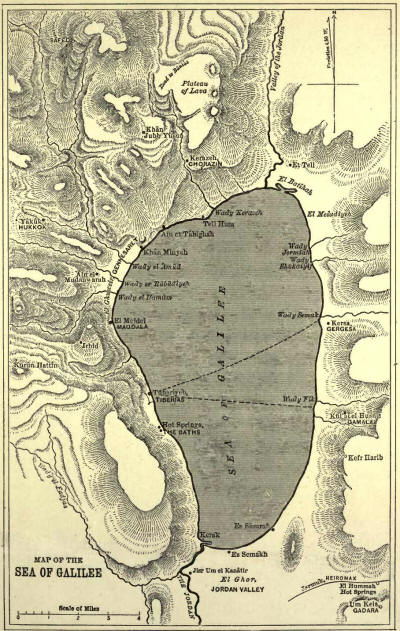|
IN the early part of 1883,
while I was paying a lengthened visit to the East with a party of friends, I
was requested by the Jewish Committee of the Free Church to keep in mind the
long-cherished desire of the church to do something for Israel in their own
land, and to have an eye to any opening that might seem to present itself
for carrying that wish into effect. During the six weeks of our stay in the
country, this was never lost sight of. Our inquiries at Jerusalem convinced
us that the field there was fully occupied. Indeed, it almost seemed as if
Christian agencies of many kinds were standing in each other's way. We found
Bethlehem a Christian village. At Hebron, in the south, Moslem bigotry was
so intense that for the time being the door there seemed closed; though
since then things have assumed a more hopeful aspect, and now, through the
Mildmay Pennefather Memorial Mission, under Dr. Alexander Paterson of
Edinburgh as medical missionary, and the. Mildmay deaconesses, an entrance
has been fairly gained. As we went north we learned that at Nazareth there
were no Jews. We were told that there had been one, but he had left. There
the Church of England had taken a firm hold; and Dr. Vartan, the esteemed
representative of the Edinburgh Medical Missionary Society, was carrying on
his important work. The only places where Jews were to be found in any large
numbers were the two sacred cities of Tiberias, beside the Sea of Galilee,
and Safed, the traditional "city set on a hill," the former being said to
contain 5,000 Jews, and the latter about 15,000. There was no Protestant
mission of any kind in Tiberias. Two Latin monks visited us at our tents on
the shore of the lake, seeking help for their work. These, and those of the
Greek Church, were the only representatives of Christianity among the Jews
and Moslems. I find the following entry in my journal: "They [the monks]
have a school at Tiberias, which young Jews and Moliaminedans take advantage
of, to the number of forty or so."
We were unable to visit Safed;
but when at a later period we reached Damascus, where the Irish Presbyterian

Church has had a mission for
many years, we met with friends who knew the northern part of Palestine
well, and gave us particular information in regard to Safed—the large number
of Jews there, their spiritual needs, and the fact that no Christian work
was then being done among them. We were assured that the field was open, and
were urged to enter in and occupy a it. It seemed as if this were the place
where our Palestine Mission to Israel should be located; and on our return
to Scotland we reported to the committee -the information we had received,
and the recommendation that had been given to us as regarded beginning
mission operations at Safed.
Dr. Wells will take up the
story at this point, and tell of his being sent by the Jewish Committee to
Palestine along with Dr. Torrance, the then missionary-elect, to survey the
field afresh and make all requisite inquiries before any practical step
should be taken. That inquiry resulted in departing from the proposal to
begin work at Safed, and resolving to make Tiberias the centre of
operations. The entrance that has been got there, as will be seen from what
follows, has been most encouraging, and after the lapse of centuries there
is again on the shores of the Sea of Galilee the bright shining of a pure
gospel light. It has been found necessary to occupy Safed as a second
mission station. And now it is for our people to bear this interesting
mission on their hearts, and in the exercise of faith and patience and
expectation to wait for the fulfilment of the desires and hopes of our
church for the salvation of Israel in their ancient land. |
